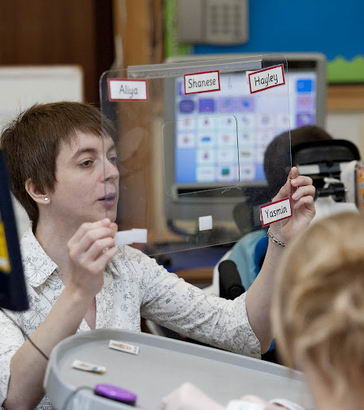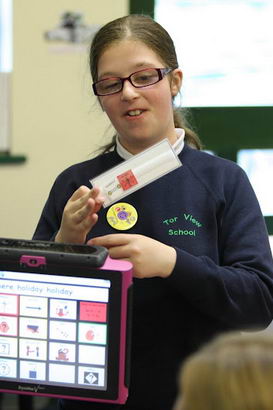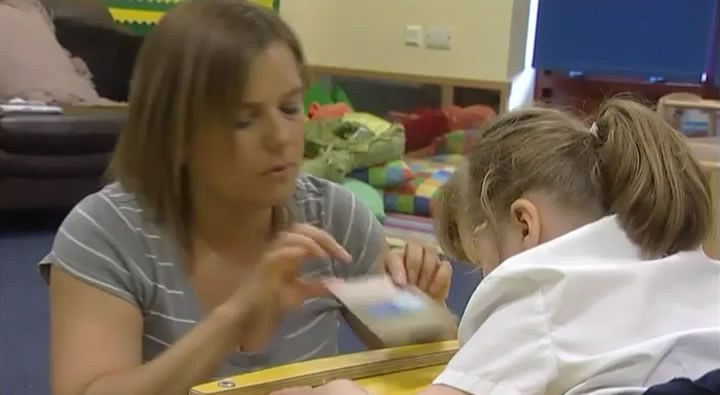
Structured approaches to language and communication have proved very effective for children with SLD/PMLD/CLDD – it is clear they can learn by imitation from an appropriate language model, with reinforcement of desired responses through use of praise and motivating rewards.
However, the approaches risk becoming meaningless to the child unless the child has the opportunity to apply their knowledge in a meaningful context.
The Derbyshire Language Scheme is an example of a structured approach based on children following instructions relating to the number of information-carrying ideas issued, and imitating the adult role-model in a role-reversal situation to encourage expression.
The Derbyshire Language Scheme
In this clip a teaching assistant describes using a structured approach in assessing a pupil's understanding of vocabulary.
- Setting conditions – learning and change will not happen in isolation.
- Structure – changes in observable behaviour can be learned through systematic rewards and sanctions.
- Initial base-line identified.
- Targeted learning – clarity, 'precision teaching', clear roles and responsibilities.
- Assessable outcomes against clear objectives and success criteria.
- Gathering of evidence of learning.
- Small steps – making goals achievable through:
- Task analysis
- Backward chaining
- Fading out prompting

- Reductionist:
- Over-simplification (can't put everything in a tick box!)
- Problems with generalisation.
- Learning without understanding.
- Emphasises what is taught, rather than what is learned.
- Only concerned with the observable, not deeper understanding.
- Casts the teacher as technician.
- Casts the learner into a passive role – 'learned helplessness'.
- Commonly used without sufficient generalisation.

Review the impact of behaviourist approaches in education with children with SLD/PMLD/CLDD with an emphasis on its application to communication.

